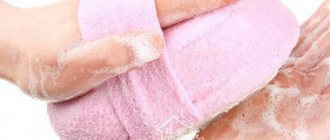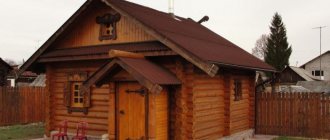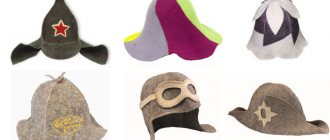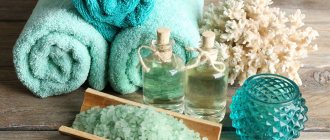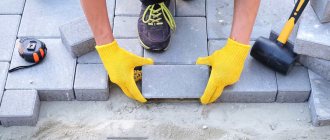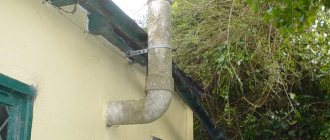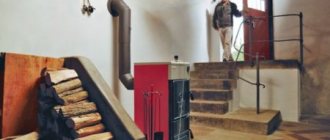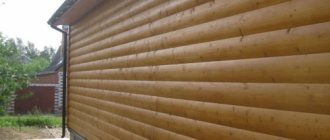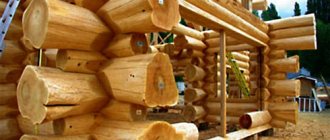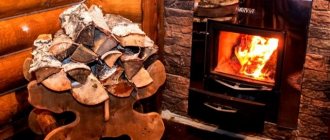A washcloth is one of the main attributes of facial and body hygiene. Such a familiar and easy-to-use item performs several tasks at once. A properly selected washcloth will become a massager, replace a scrub, and get rid of ingrown hairs and cellulite. Over the past couple of years, the demand for natural washcloths has increased significantly. People increasingly prefer products made from natural materials, especially when it comes to hygiene and body care. There is plenty to choose from: today there are more than ten types of so-called eco-scrubbers. I use these myself and today I’ll tell you about them in more detail.
Advantages and disadvantages of natural washcloths
Manufacturers offer us a large selection of a wide variety of natural washcloths, which differ in shape, size, material density, and structure. Some people make eco-scrubbers with their own hands. I, too, recently had this desire: I have jute at home, and I know how to knit)). But so far this has not come to fruition.
Why should you choose natural washcloths for your hygiene, what advantages do they have over synthetic ones:
- Act as an antiseptic
- Massage the skin, increase its tone
- Improve blood circulation
- Cleanses pores
- Do not cause allergies
- Freely pass air
- Smell good
- Pleasant to the touch
- Environmentally friendly: decomposes when disposed of
Eco-scrubbers, when used and cared for correctly, will help you say goodbye to visible skin problems and improve the appearance of your body. They will help you cheer up in the early morning and relax after a hard day.
At the same time, such products are difficult to maintain and in some respects are inferior to their artificial counterparts, namely:
- They don’t release water well and take a long time to dry.
- Harmful microorganisms quickly develop in them
- Short-lived (average service life is two to three months)
- Most materials are hard to the touch
- Most often they foam poorly
- More expensive than synthetic analogues
Such a list of disadvantages can be intimidating, but in fact the advantages outweigh, don’t they?
A variety of washcloths made from natural materials
Natural washcloths are made from a wide variety of materials. Let's talk about their benefits and use.
Loofah sponge
Loofah is a genus of herbaceous vines of the Cucurbitaceae family. Grows in South Asia and Africa. There are more than 50 species of this plant. We also grow loofah in Russia.
The fruits have the shape of an elongated cylinder with numerous dry fibers inside. The basic properties are similar to washing sponges, which, like the plant itself, are called “Luffa”. Some varieties are edible, and some are used to make soap and even water filters.
Luffa washcloths are an excellent natural massager and a replacement for weekly exfoliation. It removes the dead skin layer well, gives it softness and elasticity. Before hygiene procedures, such a washcloth is soaked for 5-10 minutes in hot water, so it becomes softer and more pliable. Use no more than twice a week, otherwise you may damage your skin. The coarser the fiber, the longer the service life.
Sisal washcloth
Sisal is a natural coarse fiber obtained from Agave leaves.
More than half of the material consists of cellulose. The plant can most often be found in Brazil, Tanzania and Mexico. Since ancient times it has been used for weaving ropes.
Sisal sponges are the toughest of all natural sponges. The material will not soften either steam or soaking in boiling water. You can reduce the friction a little by choosing a coarse knit product or by placing a bar of soap / soft sponge inside. Those with sensitive children's skin should not choose such a washcloth, and adults should use it carefully.
Best suited for cleansing legs, feet, removing old calluses and corns. It is important to treat a sisal washcloth with special antimicrobial agents and dry it dry. Otherwise, pathogenic bacteria will quickly multiply in it, it will become dilapidated and become dangerous for use.
Bast sponge
Bast is a material obtained from part of the bark of a young linden tree or other deciduous trees.
The first mention of bast dates back to the 13th century. From time immemorial, it served as the basis for weaving shoes and even making kitchen utensils.
Bast washcloths cope better than others with the task of deep cleansing pores. They can easily replace a scrub and are perfect for bath procedures. Linden bast contains so-called phytoncides, which kill pathogenic microbes.
If we talk about the disadvantages of bast, it is worth mentioning that the material “does not know how” to foam, small particles come off and can clog the drain, so it is better suited for a bathhouse. Favorable for the development of bacteria. It is important to dry such a washcloth, like any other, after washing, and scald it with boiling water before water procedures for disinfection and softness.
Jute washcloth
Jute is a natural textile fiber. It is produced from plants of the same genus.
A jute washcloth is similar in properties to a sisal washcloth, but has a less harsh “temper”. I really like this washcloth. It should be kept in boiling water before water procedures. Goes well with scented soaps and soft cleansing gels. Accelerates blood circulation, makes skin soft and smooth. Not suitable for frequent use and thin sensitive skin. Service life – 2-4 months.
Needlewomen often knit a jute washcloth themselves.
Chinese nettle washcloth
Chinese nettle or white ramie is a plant of the nettle family. Industrial crop, used for the production of textile fibers. Growing region: East Asia.
Ramie fibers are highly durable, silky and practically not subject to rotting. For centuries they were used for making ropes and sewing sails.
The Chinese nettle washcloth is medium in hardness - it is something between a loofah and sisal. Actively stimulates skin renewal and does not cause allergies. Like bast specimens, it consists of intertwined fibers. Service life – no more than 4 months.
Natural bristle washcloth
Bristles are the hard hair of some animals. In economic terms, the bristles of domestic and wild pigs and horses are more often used.
The material has long been used for the production of brushes and brushes, for stuffing various products. Natural bristle washcloths are most often a brush with a long handle and thick, elastic bristles at the base. There are also oval brushes without a handle.
You can also find a washcloth-mitten made of horsehair. The bristles are tightly twisted into strands and the product itself is woven. You can use it with your favorite products without fear that abrasive particles will “fall through” inside. The massage should be done on well-steamed, undamaged skin.
Ideal for dry massage, it fights cellulite and water stagnation in tissues well. An indispensable attribute for showers and baths. Works well in tandem with cosmetic oils and cleansers. But when wet cleaning the leather, you need to be careful to avoid damage.
Birch bark washcloth
Birch bark is the top layer of birch bark. Moisture-resistant dense natural material.
They build houses, boats from birch bark, make dishes, souvenirs, and boxes. Before paper was invented, it was used for writing. A bunch of birch bark acted as a simple torch.
Birch tar (contained in birch bark) is a safe and effective antiseptic. Therefore, neither fungus, nor mold, nor other microbes are dangerous to birch bark. Over time, such a washcloth will become softer, but it will not stop scrubbing and cleansing pores.
Sea sponge washcloth
A sponge is the simplest multicellular animal. Leads an attached lifestyle, lives mainly in sea water. Today, scientists count about 8 thousand species of sponges.
It has no separate tissues or organs; it lives by literally passing water through itself. Certain cells are responsible for vital processes, including screening out necessary substances from the environment.
A washcloth made from natural sponge is the only eco-friendly washcloth that will last a long time. It can survive even synthetic analogues. Soft and delicate, foams and washes well, does not accumulate an unpleasant odor. Suitable for washing baby skin from birth. Effectively and gently cleanses the skin of not only the body, but also the face. Fights inflammation and dryness, carefully removes makeup. Iodine ions and other biologically active substances in its composition heal and revitalize the skin.
Kese glove (kessa)
My lovely. This is the one I use most often.
Kese is a mitten made from natural materials for body exfoliation. It is put on the hand and tightened on the wrist. The main material is cotton, linen, a mixture of fabrics, silk, synthetic fiber.
For the face, neck and décolleté, you should choose soft fabrics, for the body - harder ones. When used correctly, the glove removes the stratum corneum, “opens” pores, and eliminates minor inflammations. Depending on the accompanying oils and products, it tones or relaxes. Replaces salon body massage. Before use, be sure to clean and steam the skin; you can apply oil or body milk. Kessa is one of the attributes of the hammam.
After the procedure, be sure to thoroughly rinse and dry the glove and store it in a dark place. Do not chemically or machine wash.
Linden bast
Linden bast is galvanized (cut) into narrow strips along the bast. Its length is equal to the length of the bast from which the bast was removed. You can get bast in the forest thicket. But under no circumstances should you touch the lonely growing stickies. Linden is a good and useful tree, loved by bees. Linden blossom is an excellent medicine from the forest pharmacy. There is no need to destroy a linden tree because you thought it was suitable for bast. It's another matter if you find yourself in a thicket of linden trees. There young linden trees oppress each other. They reach for the light. Their trunks are thin and tall. These are exactly what you need for bast. By cutting one tree out of two or three densely standing ones, you will not cause damage to the linden grove. Yes, with such crowding, there will be no grove. Some rarefaction will help the leader trees break out into the open. We would like to share one observation. Previously, almost every house had bast shoes. Matting was woven from the bast of old linden trees. Half of the cargo was transported in matting bags. But the linden groves did not become scarce. Half a century has passed since weaving of coulis and bast shoes ceased, but the number of lime trees has not increased; on the contrary, they have disappeared. For example, you won’t find them in the vicinity of the city of Vladimir. creativity of the people - sayings and sayings about the linden bast have been preserved and will live for centuries. “We are also not born with bastard.” - We know the matter and have dignity.
“Not every bast fits the line.” - Don’t reproach him for a trifling mistake.
“Ripped off like a stick.” — He took an exorbitantly high price.
“I changed the strap to a buckle.” - I took the bad instead of the good.
“I kicked my butt.” - Strictly dealt with it.
“The bast doesn’t knit.” - Drunk. He speaks in slurred language.
We have cited only a small fraction that have not yet gone out of use. And how many have already been forgotten. The abundance of sayings mentioning bast suggests that it has served the Russian people well.
Old bast is used for matting and sieves, but only young sticky bast is used for bast.
Its barrel should be thinner than a tea glass - the size of a glass, as the old masters used to say. They walk on the bast in the spring, when the sap begins to flow, until mid-summer. It is necessary to peel off the sticky so that it is suitable for bast for bast shoes. The trunk is cut low. Linden wood is soft. If the knife is sharp and you managed to slightly tilt the sticky, then it will be cut off in one or two strokes. Then, using a butcher or the sharpened end of a triangular file, the bast is ripped open from the butt to the top. At the top, they husk the bast from the bast and, with a juicy crunch, take it out, the bast, all the way to the butt. The bast is not torn off in parts, but rather the bast is taken out of it, trying to preserve the bast entirely. When the butt hatches, you will have, as it were, two trunks: one thinner white one (lutoshka), the other retains the appearance of a sticky one, just cut from the root. The bast must be rolled into a bagel with the tip facing inward and tied. A pair of bast shoes requires no more than three trunks.
Don't throw away white loots. The tops with leafy branches are an excellent food for goats, sheep and rabbits. And you can make something out of the dumplings. They cut easily.
You can mat the bast immediately after coming from the forest, as well as after a long time. But then the “steering wheels” will have to be soaked in a bucket.
One bast shoe (shoe cover) requires six basts approximately 12 mm wide and about one and a half meters long.
Matting is a responsible operation. First, cut the bast, starting from the butt, trying to maintain the specified width. Of course, you don’t need to measure the width with a ruler every second, but keep the width by eye. It is not so easy.
The knife, getting into the cracks formed when peeling the bast and twisting the bast into a bagel, either falls through or stumbles. The crack does not always lead him to where he needs to go. Therefore, hold the knife firmly in your hands so that it does not break. The movement of the knife along the bast is complicated by the fact that the overall strip of the bast at the butt is much wider than at the tip. The shape is a very elongated trapezoid.
In order not to cross the longitudinal fibers, you cut off the wedges somewhere in the middle. A short bast will then come out of it, which will also come in handy.
One “steering wheel” usually produces four long basts and two short ones. When matting, you will encounter holes from knots or depressions from hidden buds in the most inappropriate places. If it is in the middle of the length, then it is not a big flaw. Let the bast be half narrower in this place. Then it will be covered with a second layer. If a hole from a knot tears the bast in half, then nothing can be done; you will have to make two short basts. They weave from short birch bark basts. But take this opportunity to cut a wedge here that eliminates the crook.
(Fig. 1. Tool for weaving bast shoes and feet (shoe covers))
At the top left is a metal stump, in the middle is a knot of a strong bush with a suitable shoot from which you can make a wooden stump, as shown below, on the right is a bast crusher.
Then everything matted must be crushed on a masher (Fig. 1 on the right). The grinder is made from five thin planks. Two of them (the second and fourth - no matter which side you count from) are half as long as the side and middle ones. The boards are screwed together with two screws, after pre-processing the edges. In the lower part, where the screws are, the edges are cut off to form a handle. And inside the formed trident they are rounded.
The bast pulled through the pulp becomes softer. It will peel off slightly, invisible to the eye. It will be easier to remove the pazdira - the top brown layer. When removing, do not thin the white bast too much. Closer to the top, you can not touch the brown layer at all, removing only the buds and other roughness from it, as if slightly planing it. This is how the bast is evened out in thickness in the butt and apical parts.
